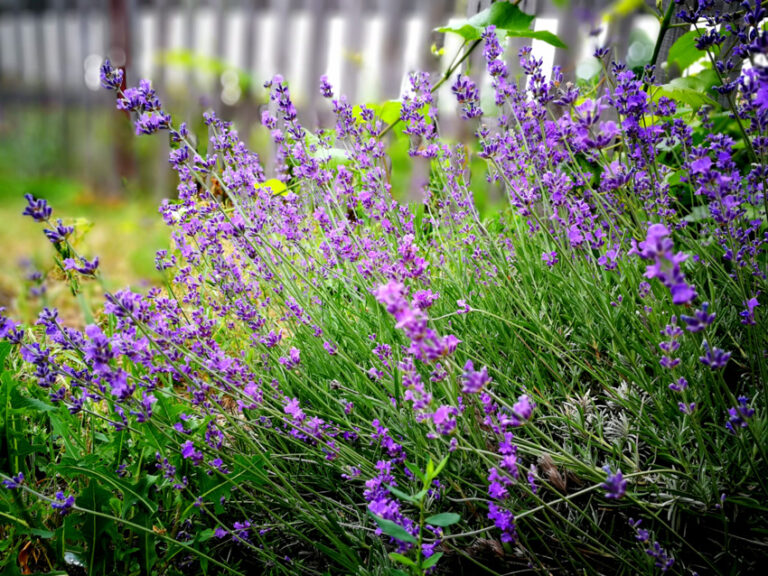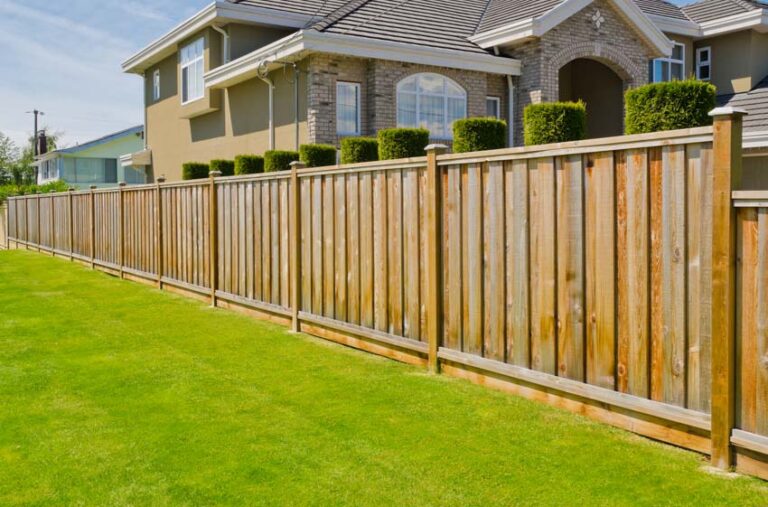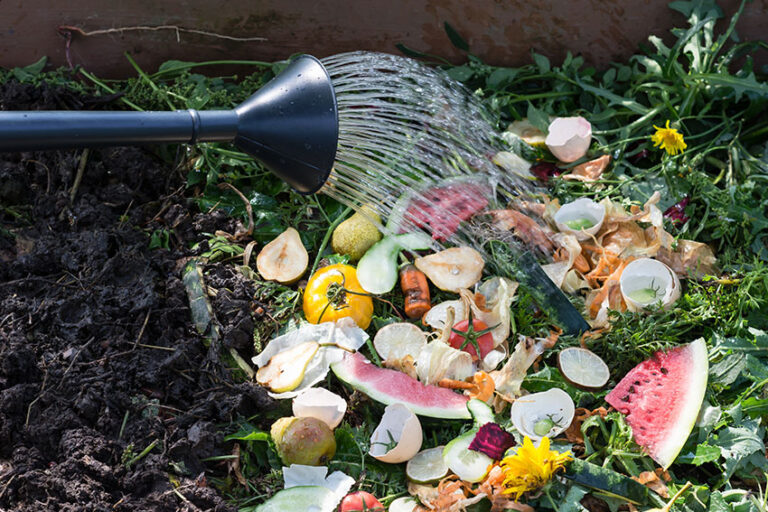Types of Calatheas (Plant Varieties & Pictures)
See the most popular types of Calatheas plants including different varieties, care tips, how fast they grow, if Calatheas like humidity, are toxic to cats or dogs, and what soil Calatheas like.
 Calatheas are well-known for their exquisite beauty and diversity. There are so many different types of calatheas that one could fill a classroom with just one of each type; most of them still undomesticated, living in their natural habitats.
Calatheas are well-known for their exquisite beauty and diversity. There are so many different types of calatheas that one could fill a classroom with just one of each type; most of them still undomesticated, living in their natural habitats.
Speaking of natural habitats of calatheas, the regions where calatheas come from are what make them such a tricky yet rewarding plant to grow. These incredibly unique and interesting plants are native to the South and Central American tropics, from Mexico all the way down to Argentina.
The different types grow dependent upon region; not all calatheas are native to the same regions, but all domesticated types require the same loose set of care routines to thrive in your home or office. Here are some of the most popular types for growing indoors:[toc]
Calathea Lancifolia

The stems are also a deep shade of magenta, which only helps to illustrate the contrast between the leaves and the rest of the plant. This calathea will thrive in low light, but not in dark spaces with no light.
Calathea Orbifolia
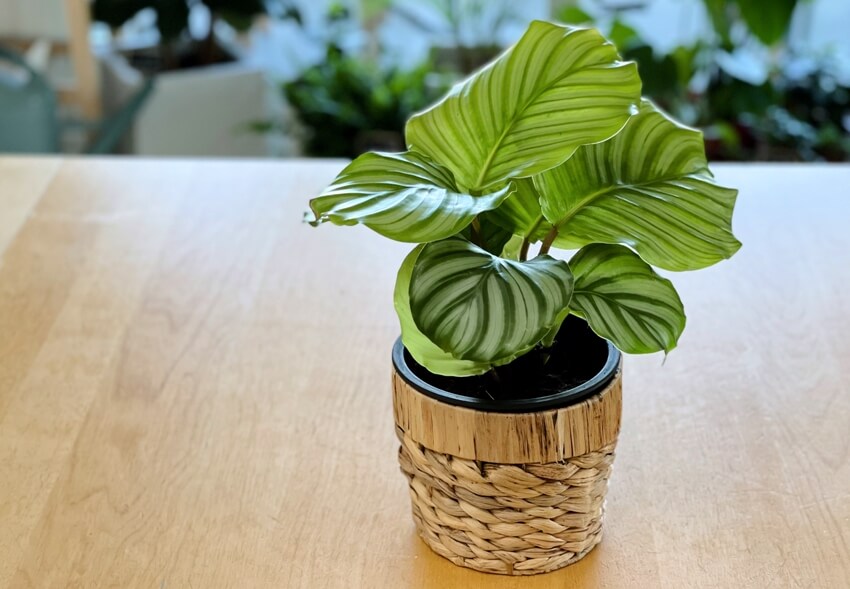
As it has lighter leaves, this calathea is better for lighter areas which get at least partial sun for four to six hours per day. Be careful not to overwater, because orbifolia will not tolerate wet feet.
Calathea Roseopicta
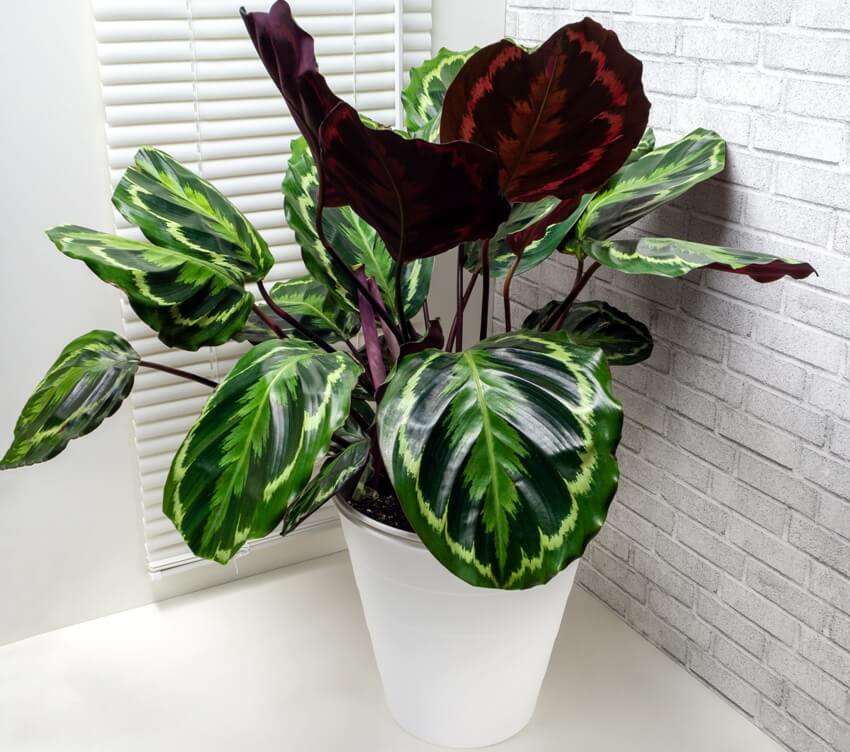
In some roseopictas, the stems can even resemble a pink similar to that on the underside of the leaves, but this largely depends on the breeder and how much sunlight this calathea is exposed to. It’s also particularly sensitive to hard water components like salt, chlorine, and calcium.
Calathea Musaica

These patterns look like an actual mosaic, which is why this calathea is great for sophisticated spaces like offices, libraries and studies.
Calathea Majestica
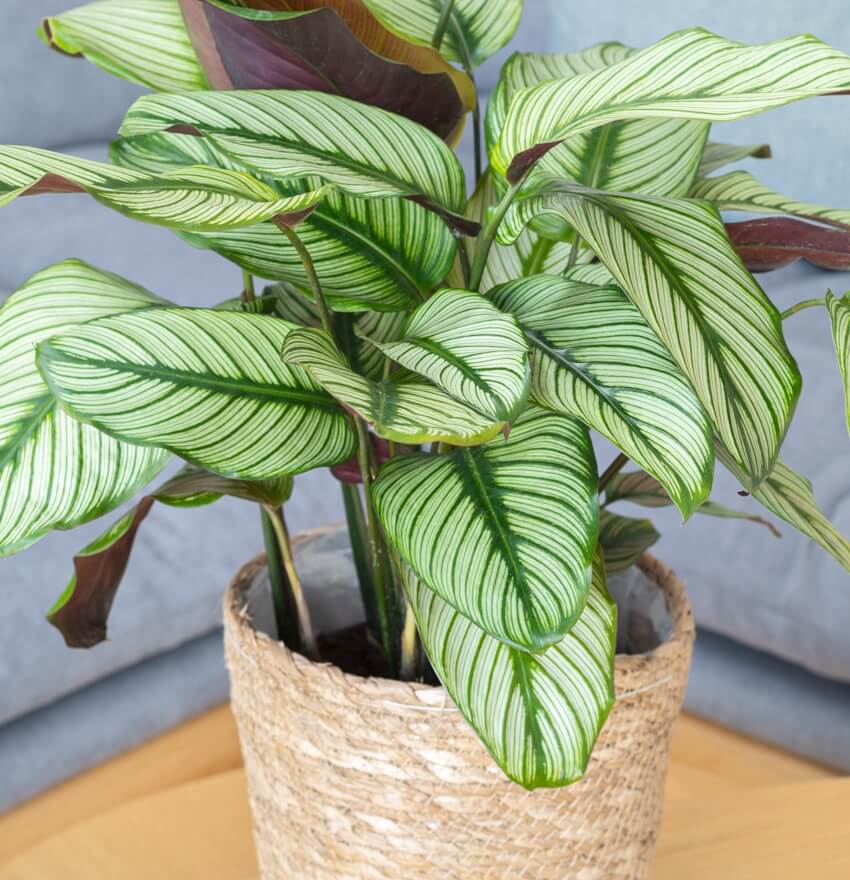
The amount of light it gets makes for the color; in this way, majestica tells you exactly how much light it needs. If the pink color begins to fade, your calathea is either getting too much or too little light (the latter is very rare).
Calathea Fasciata

The green striping does vary depending on sunlight and humidity, but it’s fairly easy to make this one happy if you have a spray bottle and a spot on a coffee table or shelf.
Calathea Picturata
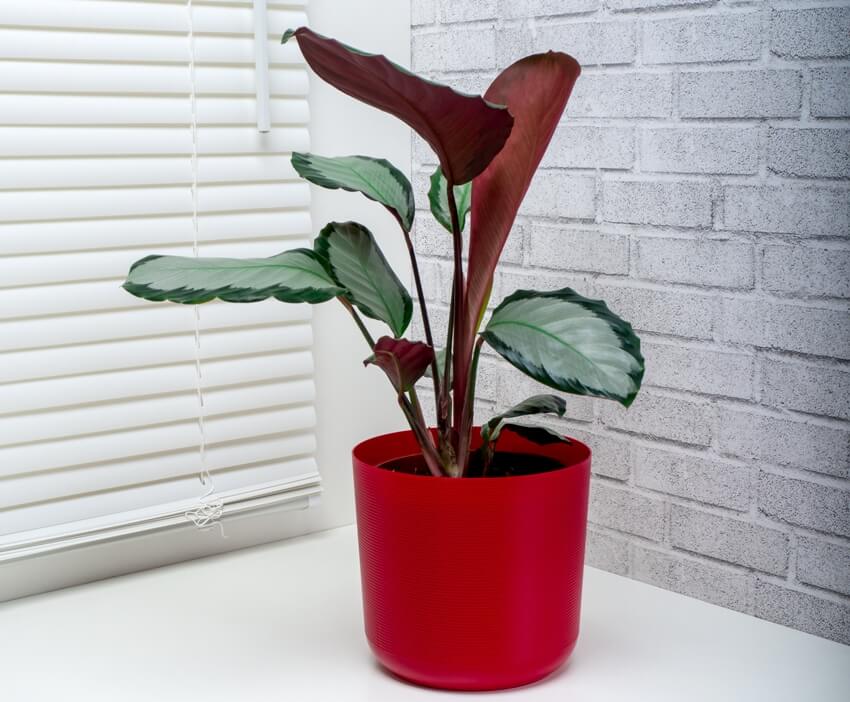
However, a feather-like marking of very pale green takes up the majority of the inside of the leaf, making each one look great against the background of the others. This type is very sensitive to light due to the light coloration of the leaves, so be mindful not to place it too near a light source.
Calathea Lietzei

Some risks associated with a variegated calathea include sunburn and a heightened sensitivity to low humidity, so this one is best for those who have a tropical setting in their space that this calathea can thrive in.
Calathea Zebrina

While zebrina will tolerate slightly brighter light, it still will burn more easily in direct sunlight with little moisture. The thicker stems of this one also pop with smaller calatheas placed nearby, which helps showcase its size and large, tropical leaves.
Calathea Crocata
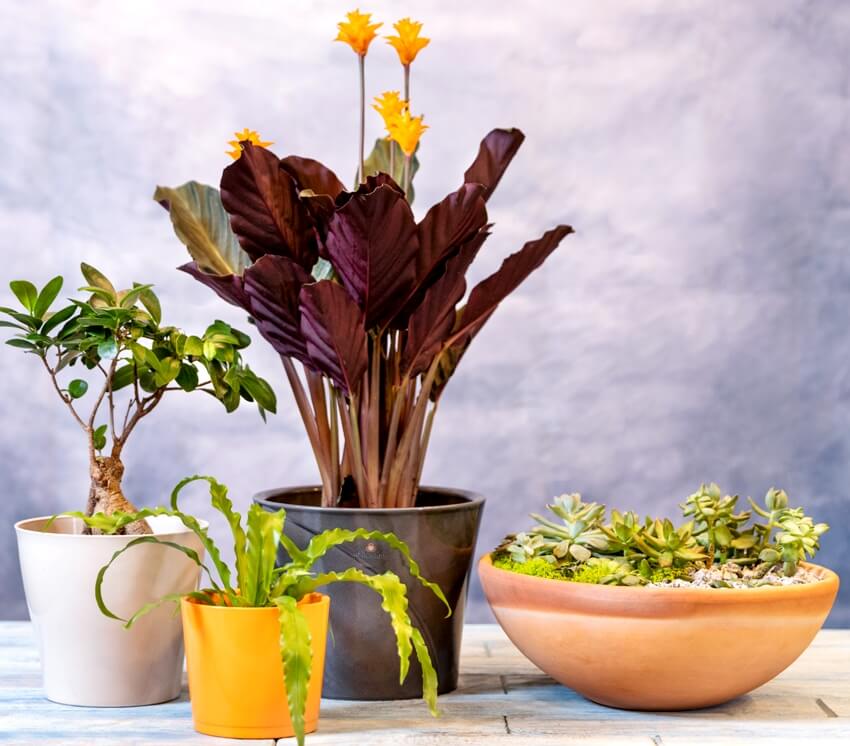
The leaves of this type are a deep green with some lighter striped accents, and the undersides of the leaves are the classic rich maroon that collectors love so much. This one is a great choice for plant lovers who need their plants to show off each year!
Calathea Rufibarba
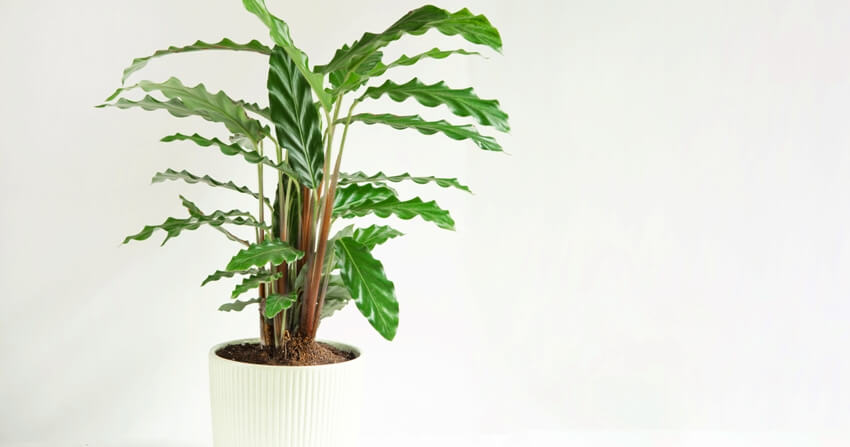
For this reason, rufibarba makes a great centerpiece or stand-alone statement plant, perfect for offices with low light but at least one east or north-facing window. Find out more about best low light houseplants here.
Do Calatheas Grow Fast?
As a renowned low-light plant, calatheas do not, in fact, grow quickly. Typically, they can be considered moderate growers, but for the most part, calatheas grow to their mature size and then stop growing any taller. That’s not to say they don’t grow any wider, but it’s a very slow process that can take up to a year to see any new starts coming up from the soil.
For optimal growth, make sure that your calathea is grown in a perfect environment, which takes some time and experimentation. Try not to allow it to be too dry, in direct sunlight, or watered with low-quality tap water. Check out indoor plants that like direct sunlight here.
Keeping them happy is a tricky process, but it can be done. Just watch your calathea for signs that it’s not happy; it will express itself, but you have to know what to look for. To avoid any delays in growth, watch out for browning tips and leaves, drooping leaves, or color bleaching. Calathea leaves are very sensitive to their environment.
If you want a large calathea right away, it’s best to purchase a full-sized plant. Otherwise you’ll be waiting quite a long time for a small calathea to really fill out its pot and look like a lush, tropical houseplant. You can also plant two or three together in the same pot, given the pot is large enough and has good drainage.
How Big Do Calatheas Grow?

Typically, a calathea will reach about two feet in height at the maximum, but some types grow taller than others, and some will even fall over once they grow too tall to support themselves on their stalks. This falling over is also how they reproduce in the wild, but we’ll come back to that later.
The height of a calathea is generally considered to be a medium height, which makes it perfect for blending areas that feature both larger and smaller plants. While they don’t make ideal floor plants, they can be raised on plant stands that help elevate them for a taller look with the same radiant colors you’re after.
If a larger, similarly showy plant is what you’re after or calatheas are just otherwise no the right size for you, there are a few close options to choose from. Most notably is the Stromanthe triostar, which looks very close to a tall version of a calathea, complete with bright, contrasting colors among darker hues. It’s all about what looks best to you.
Calathea Care
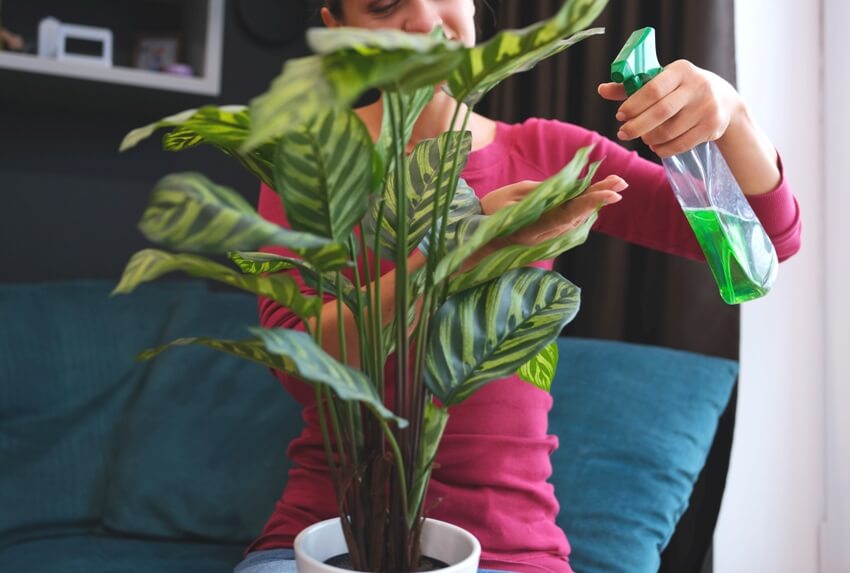
That being said, if you’re a beginner with plenty of luck, it’s worth giving calathea a try. Some types might be easier than others, so choose a beginner-friendly calathea plant to start if you haven’t got one already.
The biggest factor in calathea care is moisture. Essentially, if a calathea dries out entirely, it dies. Unfortunately, this is common in dryer climates, but can be avoided by constant daily monitoring of the soil or the use of a watering bulb.
Humidity is also a huge determinant of whether or not a calathea is happy. Anything above 40% humidity is okay; however, if your ambient air is drier, you’ll need a humidifier.
Another way to keep a calathea happy is to place it over top of a tray filled with pebbles and water. This creates what we call a “humidity bubble” or a “micro environment”, and the plant can use the humidity created to maintain its foliage.
It also helps to avoid using tap water that contains any number of chemicals or additives, as calatheas are more adept to living in environments that offer fresh, clean rainwater.
If you can’t collect rainwater, try using either a filtered watering pitcher or distilled water. A great way to keep moisture in the soil is to only pot a calathea in plastic pots, or growers pots, and then set them inside the decorative pot they’re destined for.
Calathea don’t like to be repotted right away once you purchase and bring them home, but after about two weeks they’ll be ready for new pots. Moisture meters can be particularly useful with this plant.
Light is the next big thing. Too much sunlight will toast your calathea’s leaves faster than you can say its name, and it takes this plant quite a long time to recover from this kind of trauma.
If you do end up with some browning tips, you can either trim the leaves away or simply cut away the burn spots along healthy tissue to keep the discoloration from continuing any further. On the other hand, too little light will prevent a calathea from gaining any mass, so try to find its happy spot in very filtered light.
A well-lit calathea will have healthy looking leaves with no appearances of sunburns. One of the most common signs of an under-watered plant is drooping leaves; if the leaves begin to fall, you have a very limited amount of time to water the plant and restore the leaves to their upright position.
On the contrary, an over-watered calathea will start to look barren and will have some discoloration at the bottom of its stalks. A watering routine works best to avoid both situations.
What Type Of Soil Do Calatheas Like?
This question brings us round once again to the fact that calatheas are rainforest plants, and therefore are accustomed to a certain measure of minerals, soil consistency, water, and light.
Imagine a dense jungle; there is leaf litter and debris decaying all over the forest floor, creating a rich, humus-dense compost that calatheas draw their nutrients from. The idea is to try to match the soil as closely as we can to that type of soil.
For this, use a soil that is formulated for tropical plants, or that has little perlite and lots of humus components. You’ll want plenty of peat, fine coco husk, and vermiculite.
Some calathea growers even add a live layer of moss to the top of the pot as a dressing to help retain moisture and let them know when the plant becomes too dry.
The moss also helps to provide nutrients to the plant by breaking down chemicals into usable forms that the plant can more easily convert into energy. On top of that, any decaying moss becomes nutritious sediment.
Do Calatheas Like To Be Root Bound?
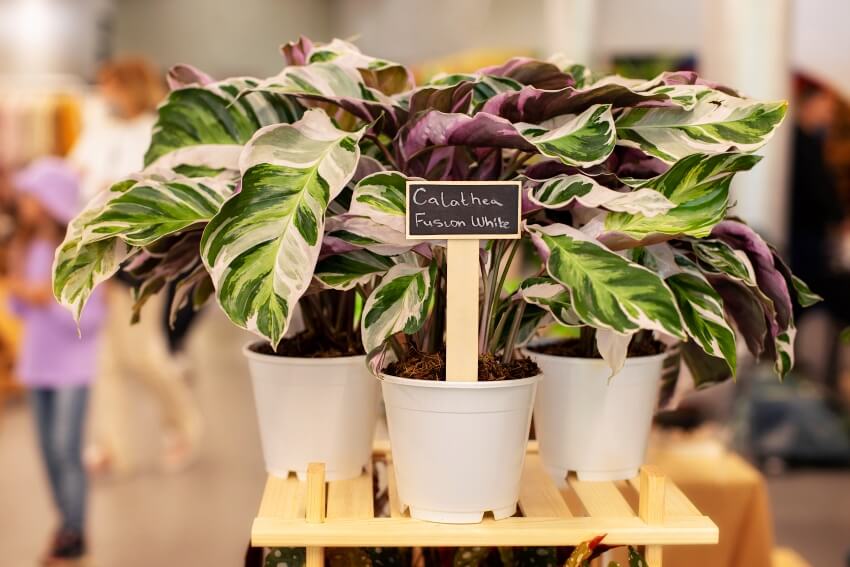
It is for this reason that you should pay extra close attention to how much room your calathea’s roots have to grow. A root bound calathea is a very unhappy plant, and it will begin to suffer and show ill effects.
For the healthiest plant you can grow, give your calathea some space. First, make sure that two weeks after purchase, you check out the state of the roots.
If there’s a space emergency and the plant is already root bound, it’s best not to wait; repot and then place in a low-light area for a couple more weeks before you introduce any more filtered or dappled light. This helps to give the plant a chance to recoup after all the shock it’s recently endured.
While using decorative or terra cotta pots might be fun, they can also be pretty detrimental to calatheas. If you absolutely love the look of them, simply pot your calathea into a plastic grower’s pot of the appropriate size (an inch or two around the pot of free space), then plop it into your more attractive pot.
The plastic retains moisture, while terra cotta would simply wick it away all too quickly, and your calathea never gets the chance to use that water for itself.
Do Calatheas Like Humidity?
Calatheas don’t like humidity. They love it. In fact, they prefer an atmosphere of anywhere from 50-80% humidity, which is very humid for most humans.
Using the tray and pebble method or a humidifier will really help to reduce the level of browning edges on the leaves, and also boosts your plant’s appearance by keeping leaves more hydrated.
One really neat tell that calatheas have is that when they need more of something, humidity included, they will gravitate towards what they need. If there is low light, they droop their leaves to reduce how much light they absorb. When they need more, they lift them up.
If your calathea seems to long for the company of nearby houseplants, it could just be jealous of the moisture that plant is creating and want to be nearby. Keeping calatheas near other plants helps increase that humidity bubble they like so much.
Are Calatheas Hard To Care For?
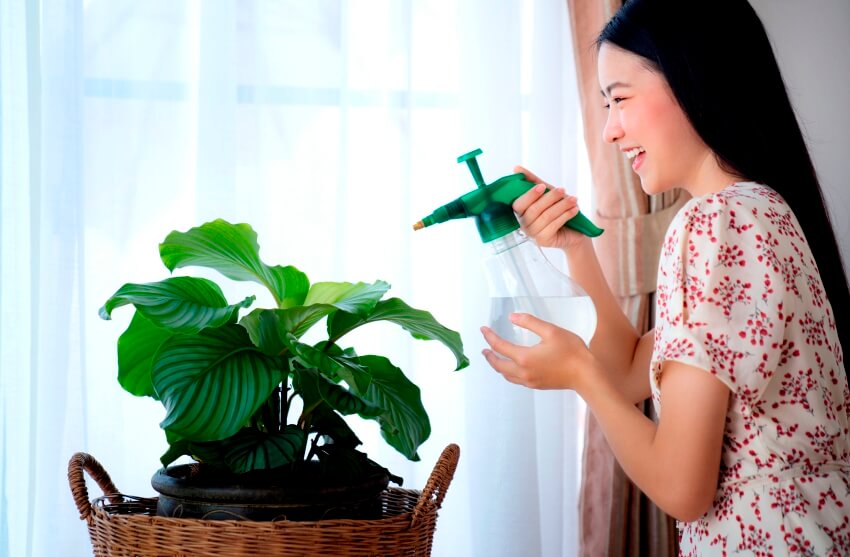
That being said, calatheas are not in any way impossible; if checking your plant is a part of your daily routine, or you always have it in your view at home, then it’s easy to remember to provide humidity and try to find the perfect spot for light.
Calatheas are considered to be a more intermediate plant to grow, but there are far more difficult plants out there. If you feel you have the time and routine to care for a calathea based on the simple care requirements, you’re probably good to go.
It’s best to try this plant after you’ve already had a few tropical species that are more forgiving, which help you to get in the groove of watering a jungle-native plant such as this one.
Are Calatheas Toxic To Cats Or Dogs?
Many tropical houseplants are extremely toxic to pets and children, so it’s important to always check to see if a new plant will cause any harm to the inhabitants of your home or office. Fortunately, calatheas are not toxic to cats, dogs, or even horses.
That means they’re safe to leave down around pets, but place them somewhere they’re not likely to be knocked over by an overactive tail! Find out more about plants that are safe for cats here.
Calatheas are also nontoxic to humans, which is great news if you’ve been looking for a plant that can be down around children. That’s not to say that parts of the plant can’t become choking hazards, as they can, but if consumed will not cause any harm. In fact, some calatheas are used to make food wraps and storage containers in their native regions.
Do Calatheas Flower?
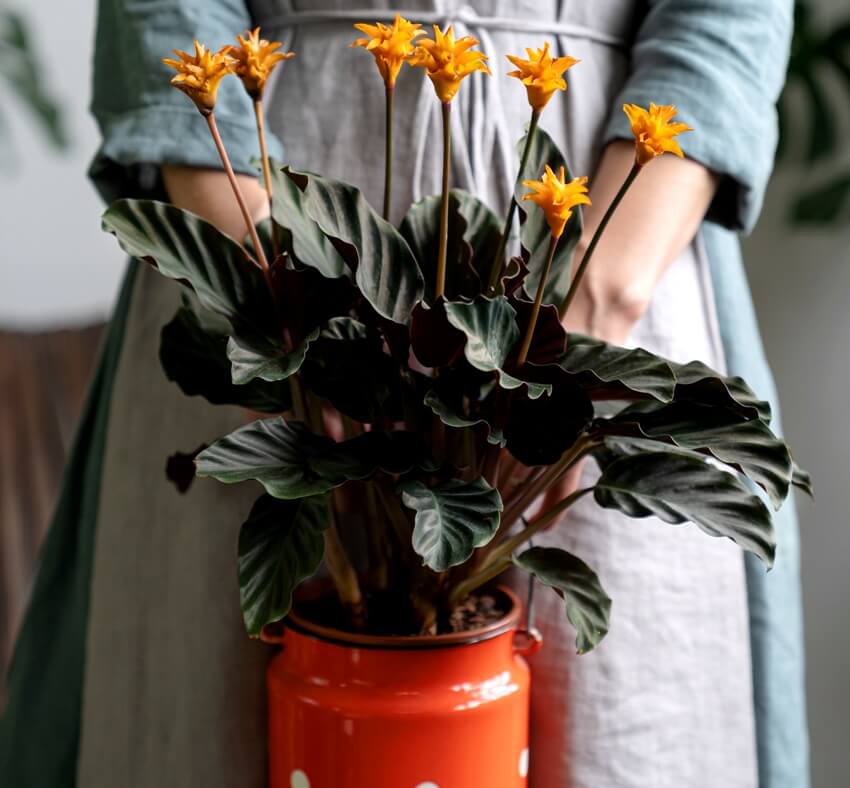
There are no pollinators, no dewey mist at perfect times of the day, and no dappled sunlight easing in gradually throughout the day, casting green hued light down onto the forest floor. Unless you have a conservatory in your house, this just isn’t realistic.
Instead, calatheas rarely flower indoors, as there really is no good reason for them to. There are a couple of species that sometimes flower indoors, such as Calathea crocata, but most people purchase calathea for the showy foliage, rather than the flowers. If you do happen to get lucky enough for a calathea to bloom in your space, take plenty of photos, because this almost never happens!
If you enjoyed this article and want more, check out our page about indoor plants that remove toxins.

